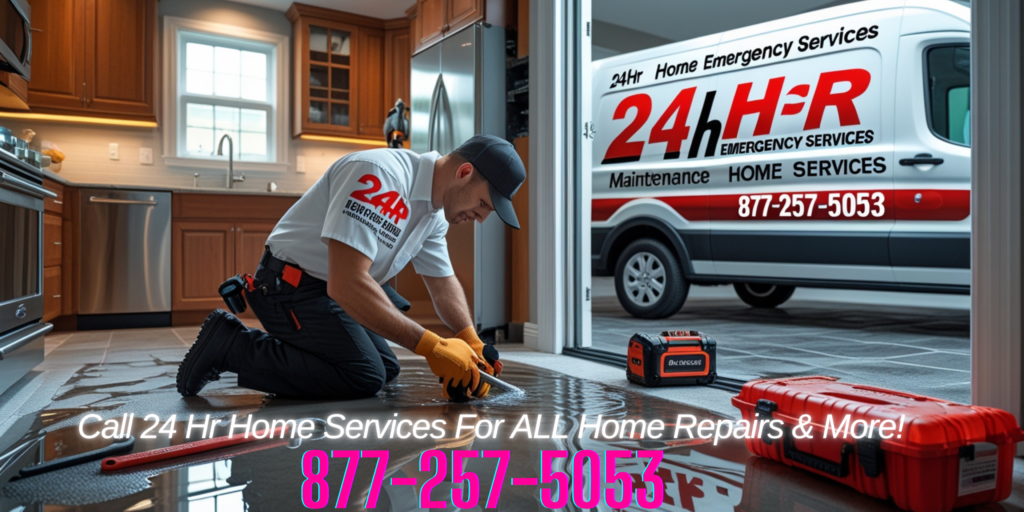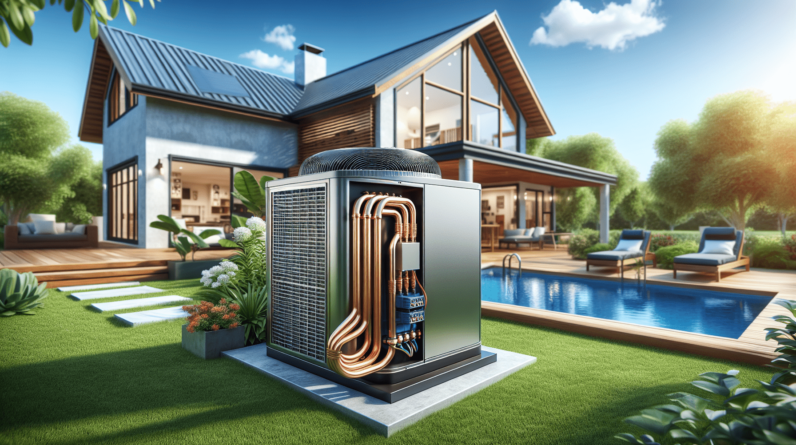
Have you ever experienced the frustration and inconvenience of a power surge damaging your beloved electrical devices? In this article, we will explore some effective methods that you can use to safeguard your electronics from these sudden and potentially destructive power surges. By implementing a few simple strategies, you can ensure the longevity and reliability of your devices, giving you peace of mind and saving you from costly repairs or replacements. So, let’s dive into the world of power surges and learn how you can protect your electrical devices.
Understanding Power Surges
What is a power surge?
A power surge refers to a sudden and brief increase in the voltage flowing through your electrical system. These surges can last for milliseconds but have the potential to cause significant damage to your electrical devices. Power surges can originate from various sources, including lightning strikes, utility grid fluctuations, and the operation of high-power electrical devices in your home.
Causes of power surges
Power surges can be caused by several factors. One common cause is lightning strikes, which can send a massive electrical surge through the power lines and into your home. Additionally, power surges can be a result of a faulty electrical system or fluctuations in the utility grid. The operation of high-power electrical devices, such as air conditioners or refrigerators, can also lead to power surges.
Effects of power surges
Power surges can have detrimental effects on your electrical devices. They can damage sensitive electronics, such as computers, televisions, and home appliances. Even if the damage is not immediately noticeable, power surges can significantly reduce the lifespan of your devices. In some cases, power surges can even cause fires or electrical shocks, posing a threat to your safety. It is crucial to implement measures to protect your electrical devices from power surges.
Types of Power Surge Protectors
Whole-house surge protectors
Whole-house surge protectors are installed directly into your electrical panel. They provide protection for all the electrical outlets and devices in your home by diverting excess voltage safely to the ground. These surge protectors offer a comprehensive solution that guards against both internal and external power surges. Investing in a whole-house surge protector ensures that all your electrical devices are safeguarded from potential damage.
Plug-in surge protectors
Plug-in surge protectors, also known as power strips, are portable devices that can be plugged into any electrical outlet. They provide multiple outlets with surge protection, allowing you to connect multiple devices safely. Plug-in surge protectors are an affordable and convenient option for protecting individual devices in your home or office. They come in various shapes and sizes, depending on the specific needs and preferences of the user.
Power strips with surge protection
Power strips with surge protection are similar to plug-in surge protectors. The main difference is that power strips also provide additional features such as built-in USB ports or outlets with specific purposes, like surge-protected outlets for sensitive equipment. These power strips offer flexibility and convenience, making them an excellent option for anyone seeking versatile surge protection for their devices.
Installing Whole-House Surge Protectors
Understanding whole-house surge protectors
Whole-house surge protectors are typically installed in the electrical panel of your home. They work by diverting excess voltage from power surges to the ground, preventing it from reaching your electrical devices. Before installing a whole-house surge protector, it is essential to understand your electrical panel’s specifications and the specific requirements of the surge protector you choose. Familiarize yourself with the installation process or consult a licensed electrician for guidance.
Hiring a licensed electrician
Installing a whole-house surge protector is not a task for inexperienced individuals. It requires knowledge of electrical systems and wiring techniques. To ensure the proper installation and functionality of your surge protector, it is highly recommended to hire a licensed electrician. Electricians have the expertise and experience to handle the installation process safely and efficiently.
Installation process
The installation process of a whole-house surge protector involves connecting the surge protector to the electrical panel and grounding it properly. A licensed electrician will carefully follow the manufacturer’s instructions and ensure that all connections are secure. They will also test the functionality of the surge protector to guarantee its effectiveness. Once the installation is complete, all the electrical devices in your home will enjoy comprehensive surge protection.
Choosing Plug-In Surge Protectors
Choosing the right voltage protection level
When selecting a plug-in surge protector, it is crucial to consider the voltage protection level it offers. Different devices have varying voltage requirements, and your surge protector should be able to handle the maximum voltage your devices may encounter. Ensure that the surge protector’s joule rating is adequate for your needs, as this indicates its ability to absorb energy from power surges.
Number of outlets needed
Before purchasing a plug-in surge protector, assess the number of electrical devices you need to connect simultaneously. Some surge protectors offer a higher number of outlets than others, so it is important to choose one that can accommodate all your devices. Consider future needs as well, to avoid the hassle of purchasing additional surge protectors later on.
Additional features to consider
Plug-in surge protectors often come with extra features that may enhance their functionality. Look for features such as auto-shutoff or surge protection indicator lights, as these can provide added convenience and peace of mind. USB charging ports are also a useful feature for charging smartphones, tablets, and other USB-powered devices. Take your specific requirements into account and choose a surge protector that fulfills all your needs.
Proper Use of Power Strips with Surge Protection
Selecting a power strip with surge protection
When choosing a power strip with surge protection, make sure to select one that meets the required voltage and power capacity for your devices. Consider the location where the power strip will be used and choose an appropriate size and length of the cord. Additionally, ensure that the power strip has a reliable surge protection rating and has been properly tested and certified by an accredited organization.
Using power strips as a temporary solution
While power strips with surge protection can provide temporary surge protection, they should not be relied upon as a permanent solution. These power strips are designed to handle minor power surges but may not offer the same level of protection as whole-house surge protectors. If you frequently experience power surges or have valuable electronic equipment, investing in a dedicated surge protector is recommended.
Avoiding overloading power strips
To ensure the safe and efficient use of power strips with surge protection, avoid overloading them with too many devices. Each power strip has a maximum power rating, typically indicated in watts or amps, which should not be exceeded. Overloading the power strip can lead to overheating or other electrical hazards. Use power strips responsibly and distribute the electrical load evenly among multiple power strips if necessary.
Understanding Grounding
Importance of grounding
Grounding is a critical aspect of electrical safety and surge protection. Proper grounding provides a path for excess electrical energy to flow safely into the ground, preventing it from damaging electrical devices or causing harm to individuals. When electrical systems are adequately grounded, the excess voltage from power surges is directed away from your devices, reducing the risk of damage.
Proper grounding techniques
To ensure proper grounding, it is essential to have a reliable grounding system in place. This involves connecting the electrical panel to an external ground, such as a grounding rod or a metal water pipe. Grounding systems should be inspected regularly to verify their functionality and make any necessary repairs or replacements. Consult a licensed electrician for guidance on proper grounding techniques specific to your electrical system.
Identifying ungrounded outlets
In older homes or buildings, it is not uncommon to have ungrounded outlets. These outlets lack an additional grounding wire and can potentially increase the risk of power surges and electrical hazards. If you suspect that your outlets are ungrounded, consult a licensed electrician to evaluate your electrical system and recommend appropriate solutions. Upgrading to grounded outlets or installing grounding adapters can help ensure the safety of your electrical devices.

Preventing Power Surges in the Electrical System
Regular maintenance of the electrical system
Regular maintenance of your electrical system is crucial for preventing power surges. A professional electrician can inspect your electrical panel, wiring, and devices to identify any potential issues or worn-out components that could lead to power surges. They can also ensure that your grounding system is functioning correctly. Regular maintenance helps maintain the integrity of your electrical system and reduces the likelihood of power surges.
Avoiding overloading circuits
Another way to prevent power surges is by avoiding overloading circuits. Each circuit in your electrical system has a maximum load capacity, and exceeding it can result in overheating or electrical failures. Distribute electrical loads evenly among different circuits and avoid plugging multiple high-power devices into the same circuit simultaneously. This prevents excessive strain on the electrical system, reducing the risk of power surges.
Keeping electrical wiring in good condition
Damaged or frayed electrical wiring can increase the risk of power surges. Regularly inspect your electrical wiring for any signs of wear, such as chewed wires, exposed cables, or loose connections. If you notice any issues, contact a licensed electrician for repairs or replacements. Maintaining good electrical wiring ensures the proper functioning of your electrical system and minimizes the chances of power surges.
Unplugging during Lightning Storms
Risks of electrical devices during lightning storms
During lightning storms, the risk of power surges increases significantly. Lightning strikes in the vicinity can induce power surges that travel through power lines and damage your electrical devices. It is crucial to take precautions to protect your devices from these surges, as they can lead to costly repairs or replacements. Unplugging your devices during storms is a simple yet effective way to safeguard them.
Steps to take during a storm
When a lightning storm approaches, it is advisable to unplug your electrical devices to prevent them from being affected by power surges. Start by unplugging sensitive electronics such as computers, televisions, and audio equipment. Also, unplug major appliances like refrigerators, washers, and dryers. Additionally, it is crucial to avoid using corded phones during storms, as they can conduct electrical surges through the phone line.
Capacitor discharge devices
Capacitor discharge devices, commonly known as surge protectors or suppressors, can provide added protection during lightning storms. These devices use capacitors to absorb and discharge electrical surges, shielding your devices from potential damage. Capacitor discharge devices can be installed at various points in your electrical system, such as the electrical panel or individual outlets, to provide surge protection during storms.
Using Voltage Regulators and UPS
Understanding voltage regulators
Voltage regulators are devices that help maintain a stable voltage supply to your electrical devices. They regulate the voltage level, compensating for fluctuations in the incoming power supply. Voltage regulators can be beneficial in areas with unreliable power grids or frequent voltage fluctuations. By stabilizing the voltage, they protect your devices from the negative effects of power surges and other electrical issues.
Benefits of using UPS
Uninterruptible Power Supplies (UPS) are backup power devices that provide temporary power in case of a power outage. UPS units come with built-in surge protection capabilities, safeguarding your devices from power surges and electrical failures. They also offer the advantage of allowing you enough time to properly shut down your devices during a power outage, preventing data loss or damage.
Choosing the right UPS
When selecting a UPS, consider the power requirements of your devices and the runtime you desire during a power outage. Ensure that the UPS can handle the total power load of your devices and has enough battery capacity to sustain them for the desired amount of time. It is also important to factor in the number of outlets and any additional features you may need, such as USB charging ports or network connectivity.
Educating Others about Power Surge Protection
Raising awareness about power surge risks
Many people are unaware of the potential dangers of power surges and the importance of surge protection. By raising awareness about power surge risks, you can help others understand the need to protect their valuable electronic devices. Share information about the causes and effects of power surges, emphasizing the potential damage that can occur. Encourage them to take preventive measures, such as using surge protectors and implementing proper grounding techniques.
Sharing knowledge with colleagues and family
Spread knowledge about power surge protection within your professional and personal circles. Discuss the importance of surge protectors and proper grounding techniques with your colleagues, friends, and family members. Highlight specific examples of power surge incidents and their consequences to illustrate the significance of surge protection. By sharing knowledge and experiences, you can empower others to protect their electrical devices effectively.
Informing others about surge protection options
Inform others about the various surge protection options available to them. Explain the differences between whole-house surge protectors, plug-in surge protectors, and power strips with surge protection. Discuss the benefits of each option and provide guidance on selecting the right surge protector for their specific needs. By informing others about surge protection options, you can help them make informed decisions to safeguard their electrical devices.
In summary, protecting your electrical devices from power surges is crucial for their safe operation and longevity. Understanding the causes and effects of power surges is the first step in implementing effective surge protection measures. By investing in whole-house surge protectors, plug-in surge protectors, or power strips with surge protection, you can provide comprehensive protection to your devices. Additionally, proper grounding, regular maintenance of the electrical system, and responsible unplugging during lightning storms are essential preventive measures. Voltage regulators, UPS units, and capacitor discharge devices offer additional layers of protection. Lastly, educating others about power surge risks and surge protection options helps create awareness and promote the protection of electrical devices. Remember, it’s always better to be prepared and proactive in safeguarding your valuable electrical devices.






